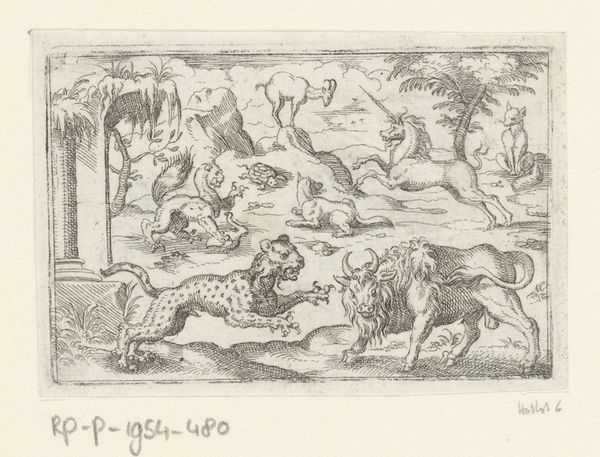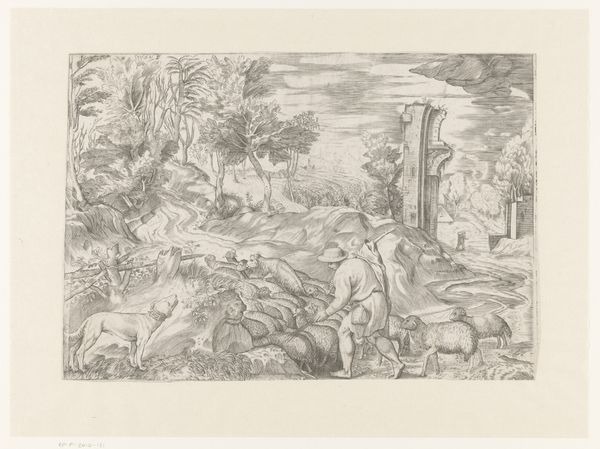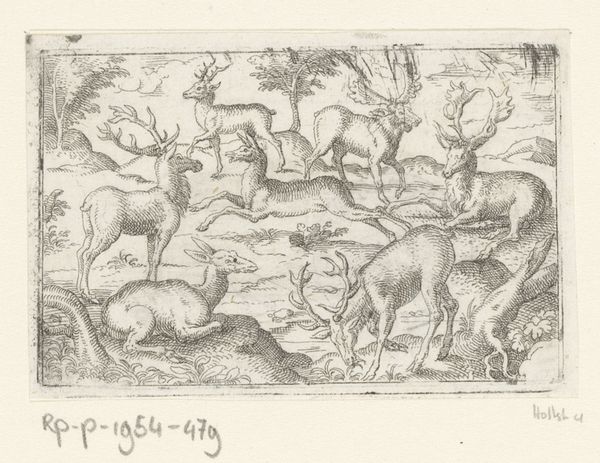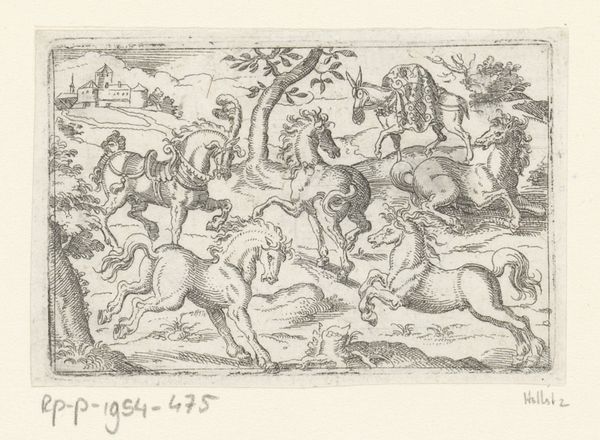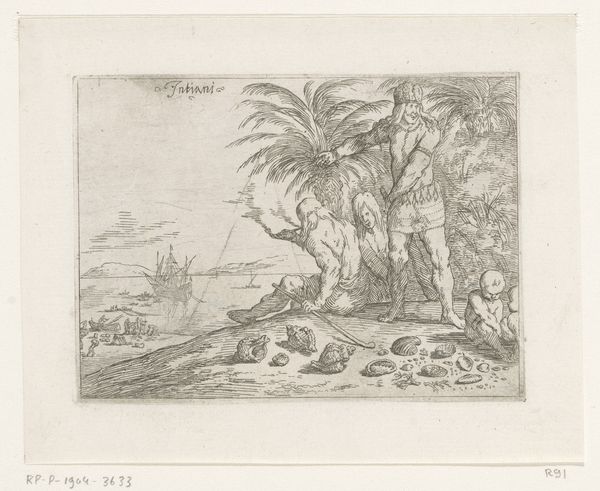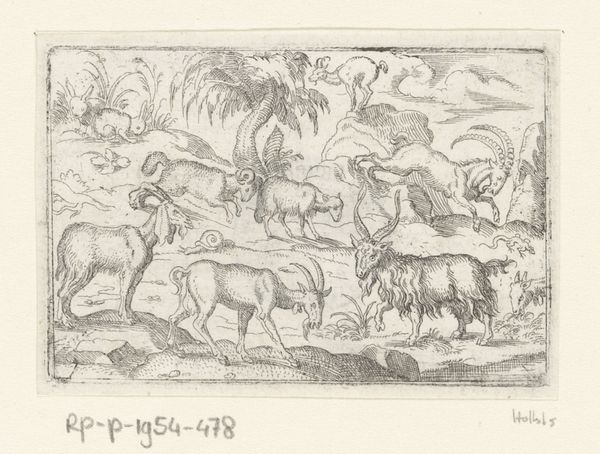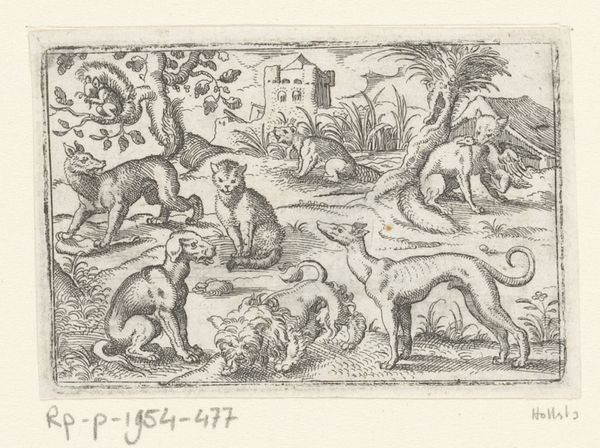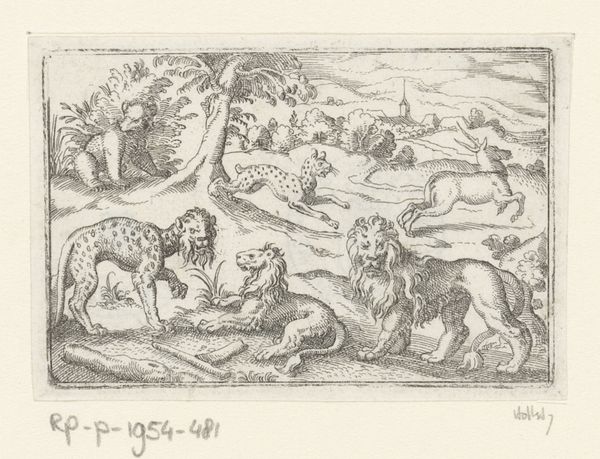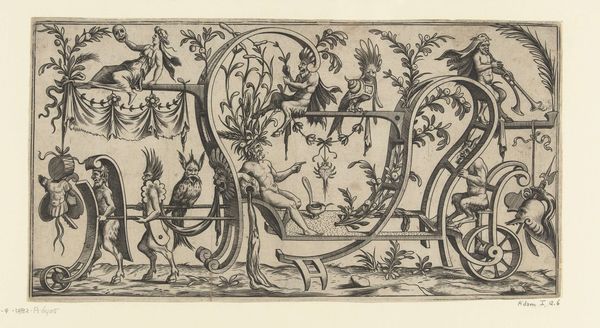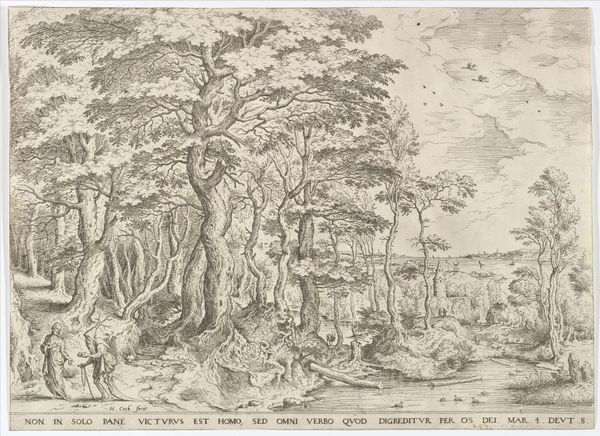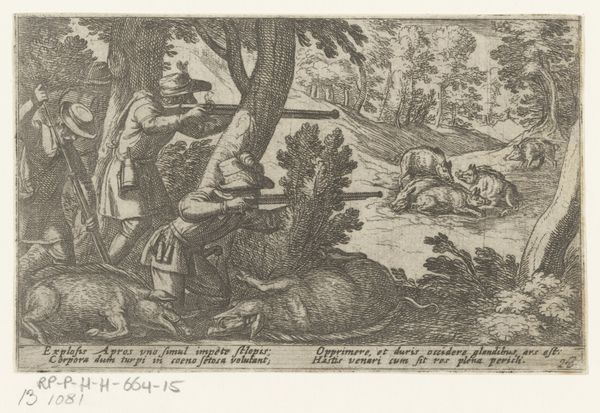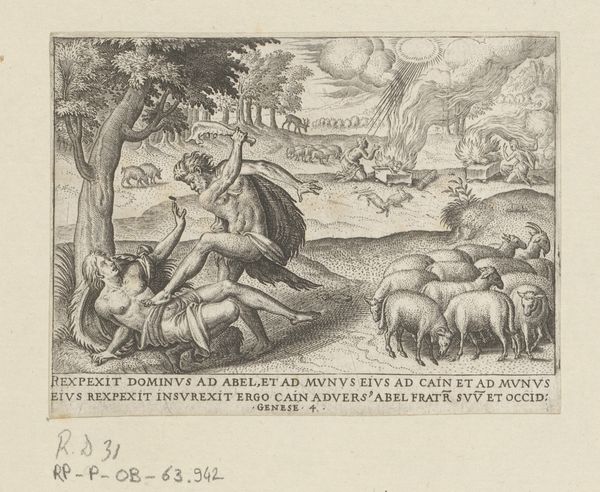
Twee apen, twee kamelen, een stekelvarken, een eenhoorn en een mythisch dier 1578 - 1596
0:00
0:00
drawing, ink, engraving
#
drawing
#
pen drawing
#
landscape
#
figuration
#
11_renaissance
#
ink
#
history-painting
#
northern-renaissance
#
engraving
Dimensions: height 54 mm, width 82 mm
Copyright: Rijks Museum: Open Domain
Curator: This pen and ink drawing, an engraving dating from 1578-1596, presents an intriguing allegorical tableau. The piece is titled "Twee apen, twee kamelen, een stekelvarken, een eenhoorn en een mythisch dier," which translates to "Two monkeys, two camels, a porcupine, a unicorn, and a mythical animal." Quite a cast! Editor: My first thought? Pure whimsy! It's like a beautifully etched dream, overflowing with strange creatures and hinting at a story I can’t quite grasp, yet long to invent. Curator: The composition is structured with an almost taxonomic impulse; each animal occupies its own visual space within the landscape. Note the foregrounded ruins, contrasted with the more "natural" elements of trees and foliage which create depth. This use of contrast establishes a visual framework that suggests an organized philosophical outlook, perhaps an early inventory of the known and unknown. Editor: Oh, definitely! And it’s got this marvelous Northern Renaissance obsession with detail – every hair, every scale feels painstakingly rendered. It’s almost… playful. Especially the mischievous cherub lurking in the branches up there. He reminds me of how seriousness and humor can co-exist so wonderfully. What’s with the peculiar menagerie of beasts though? A unicorn hanging out with camels, for goodness’ sake! Curator: The symbolic weight assigned to these creatures within the Renaissance is pivotal. The unicorn, naturally, signals purity, grace and perhaps unattainability, positioned amidst a host of more terrestrial and readily ‘exploitable’ creatures like camels signifying the more tangible world of commerce and exploration. Editor: Ah, the grounded practicality versus ethereal aspiration! It all hints at the contradictions of the era: the burgeoning scientific inquiry meeting entrenched belief in the magical and the divine. It is that beautiful intersection of curiosity, a real artistic testament to how knowledge grows and changes as humans and creatures come in contact and cross paths. Curator: Indeed, this is a microcosm reflecting the burgeoning intellectual climate during that period, which also manifests visually as an engagement with semiotic interplay and symbolic weighting within visual syntax, revealing this composition as more than decorative and truly philosophical. Editor: And even today, centuries later, it has the capacity to spark curiosity in new and unexpected ways – it leaves me thinking about how art reflects, but also reshapes how we interpret our world and histories and even our shared dreams. Curator: Yes. A reminder that visual forms encapsulate enduring cultural inquiries that still resonate, offering continued contemplation as our readings change across time.
Comments
No comments
Be the first to comment and join the conversation on the ultimate creative platform.
